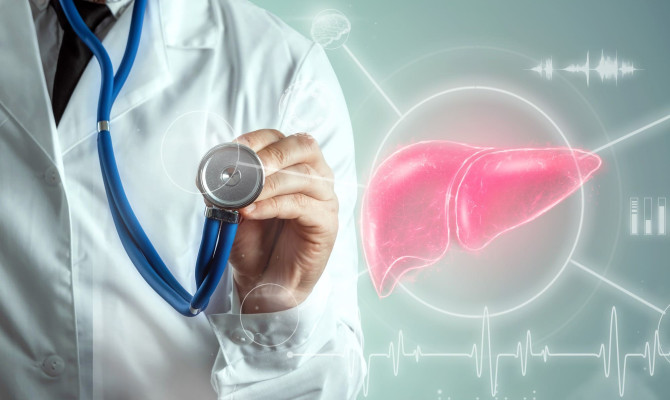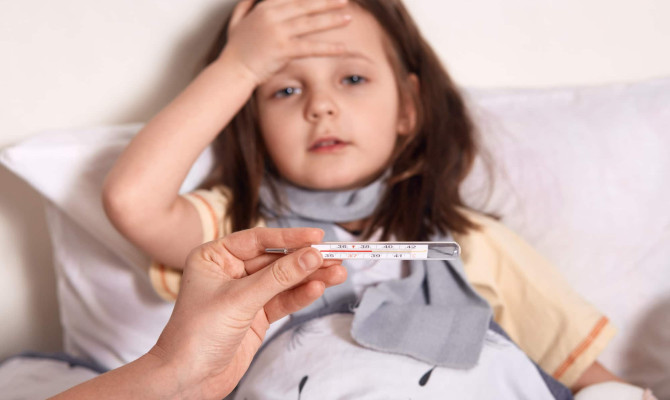Lung disease: Causes, symptoms and Management

- Lung Disease
- 17 Aug 2023
Overview
About Lung disease
Lung diseases are a broad category of diseases that can affect the structure, operation, or both of the lungs, impairing breathing and perhaps causing lasting effects.1Overview| Researched based study from Nlm.nih.gov
Lung disease prevalence has increased recently, significantly burdening global health. This page explores the many facets of lung illnesses, including their various forms, risk factors, symptoms, and potential treatment choices.

Symptoms
What are the symptoms of Lung disease?
Symptoms can change depending on the particular disease and its severity. There are, however, several widespread signs and symptoms that could point to a lung condition. Here are some common examples:1Symptoms| Researched based study from Nlm.nih.gov
- Shortness of breath
- Chronic cough
- Wheezing
- Chest pain
- Fatigue
- Recurrent respiratory infections
- Color changes of skin, lips or fingers.
- Unexplained weight loss
- Clubbing of fingers
- Breathlessness during sleep
Breathing difficulty
- A common symptom is having trouble breathing or feeling out of breath, especially when engaging in physical activity or exercise. Sometimes it can happen while you’re resting.
Chronic cough
- Lung disease may be indicated by a persistent cough lasting several weeks or months. Mucus or phlegm may be coughed up, and the cough may worsen.
Wheezing
- When air moves through constricted airways, a high-pitched whistling sound is produced. It frequently occurs in conjunction with diseases like asthma and chronic obstructive pulmonary disease (COPD).
Chest pain
- Chest discomfort or pain may result from it. Deep breathing, coughing, or specific body positions can worsen the discomfort, which can be severe or dull.
Weakness
- Being too exhausted or weak in energy is a common symptom. Fatigue and weakness may occur due to decreased blood oxygen levels caused by impaired lung function.
Respiratory diseases that recur
- Bronchitis, pneumonia, or other recurrent infections may be signs of lung disease. Those with compromised respiratory health can be more severe and chronic.1Symptoms| Researched based study from Nlm.nih.gov
Cyanosis
- It describes the bluish staining of the skin, lips, or fingers. It happens when blood oxygen levels are low, which could indicate lung or cardiac issues.
Unexplained weight loss
- Some patients with chronic pulmonary diseases may experience it.
Reduced appetite
- Increased metabolic demand, or underlying inflammation may all be contributory causes.
Clubbed fingers
- The fingertips may occasionally seem larger or protruding. The nail beds become abnormally rounded and thickened, known as clubbing.
Breathing difficulties when sleeping
- Some lung conditions, such as interstitial lung disease or sleep apnea, might make breathing harder while asleep. Recurrent awakenings, afternoon tiredness, or morning headaches could occur from this.1Symptoms| Researched based study from Nlm.nih.gov
Types
Types of Lung disease
COPD, chronic obstructive pulmonary disease.
- A lung condition worsens with time and is identified by restricted airflow. It includes diseases like emphysema and chronic bronchitis, which are often brought on by prolonged exposure to tobacco smoke or other contaminants.
Asthma
- It results in recurrent attacks of shortness of breath, chest tightness, coughing, and wheezing. Exercise, illnesses, and allergies are some examples of triggers.
Bronchiectasis
- The bronchial tubes are permanently dilated and thickened, which defines it.
Pulmonary hypertension
- A specific sort of high blood pressure impacts the arteries in the lungs.
Cystic fibrosis
- This hereditary condition affects the digestive system, the lungs, and other organs.
Interstitial lung disease
- It is a spectrum of illnesses characterized by lung tissue damage and inflammation.
Sleep apnea
- This type experiences interrupted breathing when they are sleeping. It frequently goes hand in hand with snoring and fat.
Occupational lung disease
- This happens as a result of constant exposure to dangerous substances at work.
Lung cancer
- Abnormal cells in the lung tissue proliferate out of control and in an unnatural way.1Types| Researched based study from Nlm.nih.gov
Causes
Causes of Lung disease
Tobacco use and exposure
- Smoking cigarettes mainly contributes to lung cancer and other disorders, including chronic obstructive pulmonary disease (COPD). Exposure to secondhand smoke is also dangerous and may raise the risk.
Air pollution
- Indoor and outdoor air pollution exposure might aggravate the condition. Respiratory issues can be brought on by delicate particulate matter, poisonous gases, and chemicals generated from industrial pollutants, automobile exhaust, and domestic sources.
Occupational hazards
- Due to specific jobs and work conditions, people may be exposed to dangerous substances and contaminants that might harm the lungs.
- Miners exposed to coal dust, asbestos-exposed construction workers, and silica-exposed industrial workers are a few examples. Asthma and pneumoconiosis are two diseases that these exposures can bring on.
Genetic
- It may occasionally have a hereditary component. For instance, a genetic condition called alpha-1 antitrypsin deficiency raises the possibility of getting COPD at an early start.
Infections
- Respiratory infections can bring on acute or chronic disorders. Lung tissue can be harmed and function impaired by bacterial illnesses like pneumonia and tuberculosis and viral infections like influenza and respiratory syncytial virus (RSV).
Environmental exposures
- Exposure to substances like mold, radon gas, asbestos fibers, or certain chemicals may be a factor. Mesothelioma and lung cancer are notably highly correlated with asbestos exposure.
Allergens
- In vulnerable people, allergens, including pollen, dust mites, and animal dander, can cause allergic reactions that result in diseases like allergic asthma or hypersensitivity pneumonitis.
Health issues that are already present
- Specific underlying medical disorders may raise the risk. For instance, individuals with autoimmune conditions like systemic lupus erythematosus or rheumatoid arthritis may develop the disease.
Aging
- Changes in lung shape and function can be a result of aging naturally. Adults are especially vulnerable as they age because lung tissue is elastic, and lung capacity may decline2Causes| Researched based study from Nlm.nih.gov ,3Causes| Researched based study from Nlm.nih.gov ,4Causes| Researched based study from Nlm.nih.gov
Diagnosis
How is Lung disease diagnosed?
Medical history and physical examination
- A thorough medical history will be obtained, including details regarding symptoms, smoking history, work exposures, and any family history of lung conditions.
Pulmonary tests
- To evaluate lung function, PFTs, or pulmonary function tests, monitor different parameters, including lung volume, airflow, and gas exchange.
- Spirometry, lung diffusion capacity, and lung volume measures are a few of the procedures that can be used to gauge lung function, assess disease severity, and track the course of the disease.
Imaging tests
- The anatomy and health of the lungs are frequently assessed using computed tomography (CT) scans and chest X-rays. These examinations can aid in locating anomalies, including lung nodules, masses, infiltrates, or structural changes.
Laboratory tests
- Blood tests can be performed to measure carbon dioxide and oxygen levels, look for specific biomarkers, and assess general health. Sputum examination or bronchoalveolar lavage can also be used to find malignant cells, determine inflammation, or identify infectious organisms.
Bronchoscopy
- To inspect the airways and take tissue samples (biopsy) for analysis, a thin, flexible tube with a camera is introduced into the nose or mouth. It can aid in the diagnosis of diseases like lung cancer.
Genetic testing
- This may be advised in cases where there is a possibility of inherited lung problems. These tests may help genetic counseling and treatment by identifying specific gene mutations.
Chest biopsy
- A lung biopsy may sometimes be required to collect a tissue sample for microscopic analysis.
Functional exercise testing
- This could be done in some cases to assess how well the lungs work during exercise or physical activity. They help identify exercise capabilities and limitations and offer insights into the symptoms.
Testing for molecular and biomarkers
- This can support personalized treatment plans and targeted remedies.5Diagnosis| Researched based study from Nhs.uk
Treatment
What are the treatment methods?
Bronchodilators
- They help in improving airflow by relaxing the muscles that surround the airways. They are frequently employed in COPD and asthma. They can be given using nebulizers or inhalers.
Corticosteroids inhaled
- These drugs treat asthma and some forms of COPD by reducing inflammation in the airways.
Antibiotics
- Antibiotics may be recommended as a treatment option if a bacterial infection is the cause of the lung condition.
Antiviral medicines
- Both influenza and the respiratory syncytial virus (RSV) may be treated with them.
Immunomodulatory
- They can be used to treat specific lung conditions like asthma or some forms of interstitial lung disease because they influence the immune system.
Oxygen therapy
- Supplemental oxygen therapy may be administered when there are low blood oxygen levels. It reduces breathing difficulty and helps to increase oxygenation.
Rehabilitation of the lungs
- They are made specifically for patients with lung conditions and emphasize enhancing exercise capacity, lowering discomfort, and enhancing lung function. They often include education, counseling, breathing exercises, and exercise training.
Lifestyle modifications
- Specific lifestyle changes may help in the treatment and management of lung conditions. These can include giving up smoking, limiting exposure to contaminants in the environment, keeping a healthy weight, and getting regular exercise.
Vaccinations
- The prevention of respiratory infections and consequences depends on vaccinations like influenza and pneumococcal vaccines.
Surgical operations
- This can be necessary in some situations. Examples include surgical procedures to treat some congenital or acquired lung illnesses, lung transplantation for end-stage lung disease, and lung excision for lung cancer.
Supportive care
- Palliative and supportive care goals are reducing symptoms, controlling pain, and enhancing general comfort and quality of life6Treatment| Researched based study from Cdc.gov ,7Treatment| Researched based study from Nlm.nih.gov ,8Treatment| Researched based study from Nhlbi.nih.gov
Prevention

Prevention of Lung disease
Don’t smoke
- Smoking mainly contributes to lung cancer, COPD, and emphysema.
Avoid being around environmental pollutants.
- Reduce exposure to air contaminants such as chemicals, industrial odors, and car emissions. Wear masks or other protective gear when working in situations with possible respiratory dangers.
Boost interior air quality.
- Keep indoor pollutants like dust, mold, and pet dander out of your home and ensure it is well-ventilated. If necessary, use air purifiers or filters.
Protect against workplace hazards.
- Use the appropriate protective gear and follow safety procedures if your employment requires exposure to potentially harmful substances or pollutants to lower the chance of injury.
Maintain proper hygiene.
- Wash your hands frequently to stave off the flu and colds.
Get vaccinated
- Vaccinations can defend against certain respiratory infections. Ensure you are current on all immunizations, particularly pneumococcal and influenza.
Check for radon in your home.
- A naturally occurring radioactive gas called radon can build up in residences and raise the risk of lung cancer. Check your homes for radon and take the appropriate action to lower its levels if it is found.1Prevention| Researched based study from Nhlbi.nih.gov
Any feedback on this article?
 This Articles content was accurate
This Articles content was accurate Very Informative Article
Very Informative Article I have a question or a comment
I have a question or a comment
 This article contains inaccurate content
This article contains inaccurate content This article was not helpful
This article was not helpful I have a question or a comment
I have a question or a comment
We appreciate your helpful feedback!
Checkout our social pages
References
-
National Library of Medicine
Chronic Lung Disease | Overview | Symptoms
-
National Library of Medicine
Chronic Obstructive Pulmonary Disease: An Overview | Causes
-
National Library of Medicine
Respiratory Diseases of Adults | Causes
-
National Library of Medicine
Pathology, pathogenesis, and pathophysiology | Causes
-
National Health Service
Chronic obstructive pulmonary disease (COPD) | Diagnosis
-
Centers for Disease Control and Prevention
COPD: Symptoms, Diagnosis, and Treatment | Treatment
-
National Library of Medicine
Management of chronic obstructive pulmonary disease: A review focusing on exacerbations | Treatment
-
National Heart, Lung and Blood Institute
COPD | Prevention






































